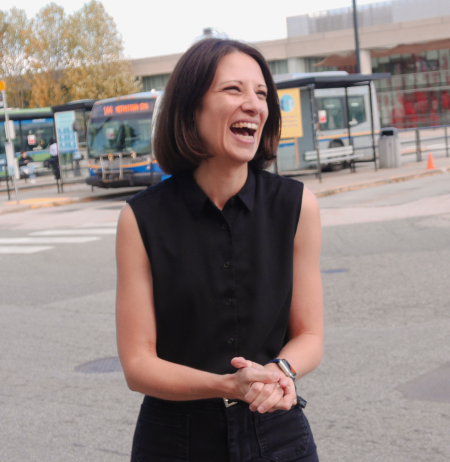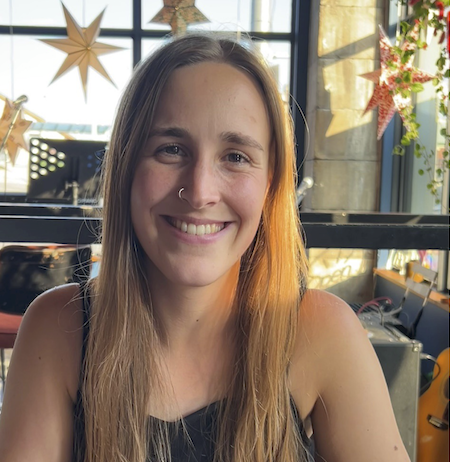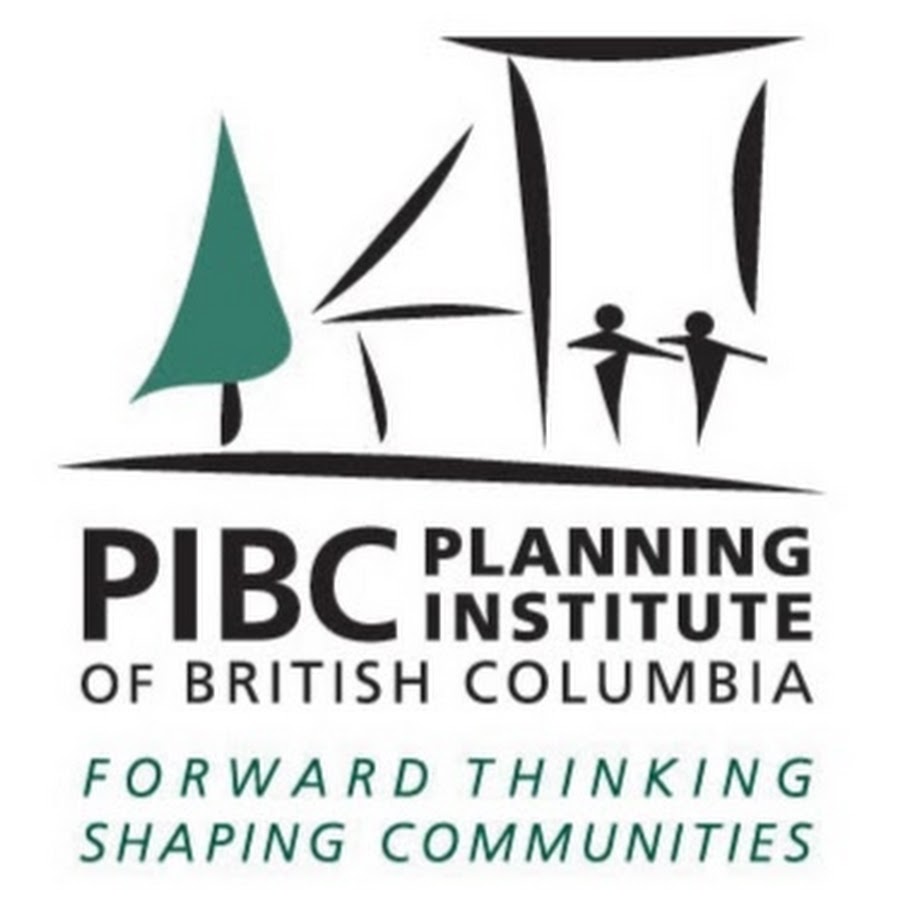Scroll down for current highlights on the range of work and interests of featured faculty and students at SFU Resource and Environmental Planning Program. For more information on SFU, its planning program, students & faculty, visit: http://www.sfu.ca/rem/planning.html.

What makes you passionate about planning?
Planning touches so many parts of our lives. Yet not many people really know what planning is! As a researcher and educator, I think we need to change that. More recently what makes me passionate about planning is the need to connect to people and share the world of planning. Planning decisions can increase the quality of lives for humans, as well as other species and entities (think trees and rivers). I’ve always been drawn to the core idea that as planners we’re trying to make the world a better place, even if its just our local context. How do we use the tools we have available to us in our planning toolbox to extend our impact and imagine a better future?
Tell us about a project you are working on and why it excites you.
I’m going to share two very different projects, but both excite me in different ways.
The first is a new radio segment called ‘Urbanisme avec Andreanne Doyon’ I’m doing with Radio Canada for their program Panaroma (weekday afternoons 3:30-6pm for BC and Yukon). Every other week I’ll be discussing a relevant issue or concept related to planning. The first topic was micro-mobilities and the introduction of Lime Scooters to the City of Vancouver, and the second topic will be on Indigenous led property development in the lower mainland. This is a great way to share planning with more people, as well as practice my French!
The second project is research related. My students are I are investigating planning for extreme heat (also known as heat mitigation planning). As part of our research, we’re looking at existing policies and strategies developed by municipalities, regional districts, and the province to reduce the impact of extreme heat and heat waves. We’re interested in how extreme heat is understood as a planning and building issue, with long term implications, rather than simply from an emergency response or public health perspective. As part of our work, we’re also exploring opportunities for new initiatives and responses that can be implemented by planners to support long term heat mitigation for our communities in BC.
What do you think the most important challenge will be for planners in the future?
My work is primarily related to planning for and in response to climate change. This is a challenge we will continue to face in the future. Climate change needs to be not only be integrated but centred into planning education and practice.
What are you most excited about at your planning school?
I think REM is working on some really cool stuff when it comes to reconciliation planning and working with Indigenous scholars and communities. I can’t wait to see how my colleagues and students help transform our profession and help us forge new approaches to planning.
Tell us about a place that has been influential to you.
I grew up in small towns and rural communities. Until the age of 19, the most populated place I had lived in was around 30,000 people. I experienced the walkability of a small town, being able to walk to school, to the farmer’s market, to local restaurants, and easily get to sport practices across town. I also experienced the necessity of a car (and your parents) when living in a rural area. The only thing we could walk to was a gas station, and as we got older we could bike to some of the local farm stores. This upbringing was in contrast to the time I spent each summer in Montreal visiting my uncle. He lived downtown in an apartment and didn’t own a car. Together we walked and took public transport to explore the city. He showed me his short cuts through buildings and his favourite places to eat and drink. From a young age, I knew that there were folks who lived in houses and other that lived in apartments, some people owned their homes, while others rented, some people relied on their cars to get around, while others had more active transportation options. What strikes me about these differences, is that they were never discussed a being better or worse, simple different ways to exist. Where you live impacts the choices you have available to you.

What makes you passionate about planning?
My passion for and interest in planning stem from its convergence of disciplines. It seems like planners have to know a little bit about a lot. As someone who has felt torn between different interests, I appreciate the breadth of opportunities that planning has to offer. Even in specialization, you will likely still have to wear a lot of hats and view the world through a lot of different lenses. Finetuning the ability to see problems from different angles is a beautiful aspect of planning, even if it can seem tiresome. In the face of climate change and countless social injustices, I think planners play, and will continue to play, an important role in connecting the dots between problems and solutions, whether they be large or small in scale. I’m excited to see where this journey will take us over the coming decades.
Tell us about a project you are working on and why it excites you.
I am lucky to be working on a SSHRC-funded nature-based solutions project that seeks to better understand how nature-based solutions are already being planned for and implemented in rural and Indigenous communities in BC and which barriers are preventing further adoption. I think this project sheds light on an important reality, which is that smaller, more remote communities across Canada are chronically underfunded, to the point where critical infrastructure systems are deteriorating faster than budgets will allow them to be replaced. This puts both people and land at risk, especially in the face of climate change.
Ideally, one could just wave a magic wand and make the chronic underfunding disappear. However, that would gloss over another issue, namely the one of environmental degradation. Our tendency to blindly trust in engineered ‘grey’ infrastructure for service delivery has led to valuable greenspaces being paved over and natural waterways being diverted rather than being viewed as natural sources of service delivery and support. Incorporating nature-based solutions into land use planning practice could alleviate some of the pressures on rural and Indigenous community infrastructure, thereby not only increasing security for local residents but also giving back to the natural surroundings.
What do you think the most important challenge will be for planners in the future?
As many others have said, it’s difficult to pick just one challenge as the most important one. A very high-level answer to this challenge would be to achieve a just future. Every issue on the spectrum of challenges that we are facing today, from climate change to reconciliation to war, requires justice for there to be any progress on the problem-solving front. In a nutshell, to me, justice is recognizing and protecting the value of past, present, and future lives (including that of the planet) and writing that into how we govern and design the places where we live, play, and learn, knowing that these places are shared across time, lifeforms, and environments.
There was a really great line in a recent PLAN Canada article about how our infrastructure is the physical manifestation of our social contract. It resonated with me because of how poetic and true it is. Planners have opportunities to weigh in on decision-making that informs and influences the social contract, and these opportunities can be leveraged to strive for a more just social contract. As such, I think it’s really important for the planners of today and those of the future to make a habit of reflecting on their values and how these translate into the actions that they take in their professional life and to think about who is impacted by these actions.
What are you most excited about at your planning school?
There are two components to my excitement of being a part of the MRM program at SFU.
The first is that I know I have made a lifelong group of friends and I can’t wait to lean on and support these incredible people as we enter the arena of professional planning. It’s comforting to be surrounded by like-minded peers and the diversity of our research interests also really enriches the learning experience of the MRM program.
The second component is the interdisciplinary constellation of faculty and their courses. This is a key strength of the School of Resource and Environmental Management as it provides students with learning opportunities that reinforce commonly held beliefs while also creating space to challenge others. The ability to think critically about a situation or a problem is a valuable skill to have as a planner, and I’m grateful for the relevant practice and tools that the MRM program equips us with.
Tell us about a place that has been influential to you.
Although I am not specializing in transportation planning, I am fascinated by places that have succeeded at encouraging active transportation through better infrastructure and maintenance planning. The Netherlands is a prime example that everyone is familiar with so I probably don’t need to go into too many details. Visiting my Mom, who lives in the part of Germany that borders the Netherlands, allows me to experience similar levels of bicycle-infrastructure. Most roads in the countryside where she lives have separated bike lanes running along them which makes biking that much more of an attractive option for getting around. Oftentimes, the bike routes are far more scenic too, allowing you to ride along the beach or through quieter, more secluded parts of the countryside.
While it may seem intuitive to think that the cycling success of this region of Europe can be attributed to the flat terrain and mild weather, I love that Finland challenges this thought by showing that investing in year-round bike lane maintenance can keep cycling rates high even in the middle of the very cold and very snowy Nordic winter (not unlike what we experience in many of our Canadian cities…). Again, this ties in perfectly to the notion that our infrastructure, and how we maintain it, is a reflection of our social contract. I would love to see more investment in sustainable transportation infrastructure, including but not limited to cycling, throughout Canada over the decades. Not only would that make the lives of people already partaking in active transportation easier, but it would also act as a signal to others that this is a viable form of transportation that is worth trying out. This also touches on the importance of a mindset of “we’re in this together” and being open to ideas and concepts from elsewhere – all the while applying a place-based lens for one’s unique context. Teamwork makes the dream work.




